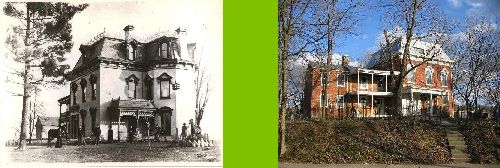Now that I know that plaster is basically slaked lime, gypsum and sand, and that I can repair stucco fairly rapidly, I have been doing some research because eventually I would like to finish some of the rooms in the basement. I read somewhere that basement walls in old houses were plastered to stop moisture from passing up to the upper floors. Lime plaster absorbs moisture it seems.
Today I was applying a 3rd coat of joint compound on my parlor walls to smooth them so that I can finish them up later in the week with a thin application of "topcoat". While I was doing this I got to pondering on the ingredients of the stuff. Well, HERE they are in case you just had to know.
Then I found THIS information. If you are hell bent on destroying plaster walls because they are cracked, you should read it. Then there is THIS site to read for additional information.
I do what is practical since I always find that there are several ways to do the same thing.
I have noticed that the longer it takes to get this place fixed up the better I get at doing it though!

2 comments:
Nice info. There is a US distributor for Mike Wye in Ohio. You can find it at http://www.heritagelime.com/
There is also Virginia Lime Works at http://www.virginialimeworks.com/
And there is also US Heritage in Chicago at http://www.usheritage.com/
I have an unrelated (to plaster) question. I've been reading your blog for about a year now, but I've not spent a long time digging through your archives. Would you mind posting an overall summary of what you've done, and what remains to be completed before you move into the Crackhouse? A lot of the rooms that you've featured seem nearly complete, and then others do not. What's the current status? Thanks!
Post a Comment